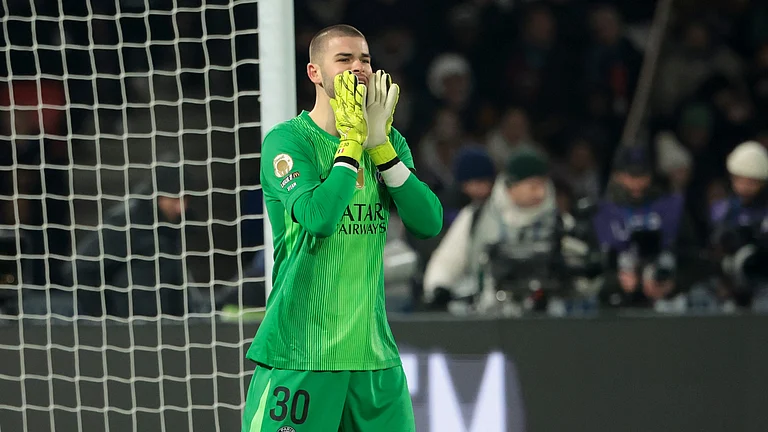Capitals are built and redesigned as much to meet the requirements of a nation, as to register one’s place in history. The Central Vista Redevelopment project, rightly so then, is being termed as a “testimony to the spirit of Make in India”, a symbol of “aatmanirbhar bharat”. Future historians will write about the worth of the symbolism, but Prime Minister Narendra Modi’s dream project aims to redesign India’s power centre, and fashion new memories and histories. The redeveloped Central Vista Avenue, which is being inaugurated on Thursday, attempts to change one of India’s most iconic landscapes, an open space that carries millions of intimate tales. The avenue, which covers the area between Rashtrapati Bhavan and Vijay Chowk to India Gate, frequently occurs in literature and cinema as a site of fledgling romances, profound conversations and light banter. Generations grew up calling it Rajpath, but it is now Kartavya Path, confirming the intent of the government that has always asked the citizens of their duties without focusing on their corresponding rights. The Amar Jawan Jyoti, the eternal flame that inspired visitors and that once adorned India Gate has already been extinguished and merged with the flame at the National War Memorial.
The revamped avenue is part of the larger Central Vista Redevelopment project that includes a new Parliament building, which is expected to be functional later this year, the building of a Common Central Secretariat, new buildings for the IGNCA, official residences for the Vice President and the Prime Minister, relocation of National Museum in North & South Block. Conceived in December 2019, the entire project is scheduled to be completed in several phases by 2026.
The iconic sarkari buildings of Shastri Bhavan, Nirman Bhavan, Udyog Bhavan, Krishi Bhavan, Vayu Bhavan, besides the IGNCA and National Museum are rich archives of memories. These buildings have birthed the Republic, cradled and nourished it, and have seen it growing. It’s an attempt to reimagine the Republic.
‘Essential project of national importance’
Obviously then, the Central Vista project has seen stiff opposition from several sections. In May 2020, 60 former bureaucrats wrote to the prime minister Modi and Union Minister of Housing and Urban Affairs Hardeep Singh Puri, arguing that the project would damage both heritage and environment. Consider the extent of destruction that according to the forest department, of the total 404 trees transplanted for the ‘Proposed Expansion and Restoration of the existing Parliament Building’, only 121 managed to survive.
When the national capital was under curfew during the lethal second wave of covid last year, the construction work for the Central Vista Avenue continued unabated. Several petitions were filed against the project, but were eventually dismissed. In January 2021, the Supreme Court approved the Central Vista Redevelopment Plan. In May 2021, the Delhi High Court noted that Central Vista Avenue was a vital and essential national project. A bench of Chief Justice D N Patel and Justice Jyoti Singh even imposed a cost of Rs one lakh on the petitioners who wanted the work to be halted during the pandemic.
"The present petition has been filed to stop with immediate effect the work of the redevelopment of Central Vista Avenue. This work is part and parcel of the Central Vista project and of vital public importance,” the court said. “In fact, the whole Central Vista project is an essential project of national importance, where the sovereign functions of Parliament are also to be conducted. Public is vitally interested in this project.”
The architect of Central Vista
In 2016, an Ahmedabad-based architect Bimal Patel wrote an article in a newspaper, proposing the construction of a new Parliament building that would “powerfully signify who we are, how we view our past and where we see ourselves going”. Patel, incidentally, had designed a new complex of offices for the legislative assembly in Gandhinagar when Modi was the chief minister. A few years later, his firm got the contract to prepare the masterplan and design of the Central Vista Revamp project. Incidentally, Patel’s firm is also involved in the construction of the Kashi Vishwanath corridor in Varanasi, Modi’s another dream project.
The Central Vista, thus, is a wider scheme to transform the face of Lutyens’ Zone and fundamentally alter its character. It needs to be seen in conjunction with the Union government’s similar plans including converting Teen Murti Estate, home to India’s first Prime Minister Jawaharlal Nehru for 16 years, into Pradhanmantri Sangrahalaya, a museum for all the Prime Ministers Museum. It’s no secret that the Modi government has little love for anything related to Lutyens. The landscape had to become the target of a government that wants to erase and rewrite our shared histories.


























